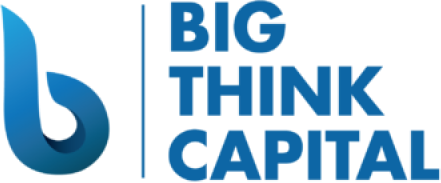Navigating the Effects of Rising Interest Rates on Small Business Loans
Estimated reading time: 7 minutes
- Understanding the implications of rising interest rates on small business loans.
- Strategies to evaluate funding needs to avoid overextension.
- Exploring alternative financing options amid tightening lending standards.
- Importance of maintaining a strong credit profile for favorable loan terms.
Table of Contents
- The Current Landscape of Interest Rates
- Understanding the Impact on Small Business Loans
- Strategies for Securing Funding Amid Rising Interest Rates
- Conclusion
The Current Landscape of Interest Rates
As we enter 2025, small businesses face a financial landscape transformed by increasing interest rates. Over the past few years, the Federal Reserve has taken measures to combat inflation, resulting in higher borrowing costs. This shift has profound implications for small business owners seeking funding. Understanding these changes and adapting funding strategies can position small businesses for success in a challenging economic environment.
Currently, the average interest rate for small business loans is hovering around 7.5% to 9.5%, depending on the type of financing and the borrower’s creditworthiness. According to the Federal Reserve Board, this increase marks a significant shift compared to the historic lows of around 3% that many businesses enjoyed just a few years ago.
For small businesses, these rising rates mean higher repayments and increased operational costs. It is crucial to navigate these changes effectively to secure necessary funding without overextending financially.
Understanding the Impact on Small Business Loans
Higher interest rates distinctly affect various aspects of small business funding:
- Cost of Borrowing: With rising rates, the cost of loans increases, leading to higher monthly payments and total loan costs over time. This can strain cash flow, especially for startups and businesses with tight margins.
- Loan Approval Standards: Lenders may tighten their criteria for loan approval as they manage the risk associated with higher default rates linked to increased borrowing costs. This means that businesses need strong credit scores and robust financials to secure funding.
- Funding Options: The surge in interest rates has shifted the focus from traditional financing methods, such as bank loans, to alternative financing options including merchant cash advances and lines of credit. Understanding these alternatives can be beneficial for businesses struggling with high-interest loans.
Strategies for Securing Funding Amid Rising Interest Rates
While rising interest rates present challenges, small business owners can adopt several strategies to secure funding that aligns with their financial goals.
Evaluate Your Funding Needs
Before seeking financing, assess your business’s needs and financial health. Consider the following:
- Amount Needed: Determine how much funding is required and for what purposes. Avoid borrowing more than necessary, which can increase repayment burdens.
- Timeline: Identify the ideal timeline for funding. Is this a short-term need, or do you require capital for long-term objectives?
- Cash Flow Projections: Prepare cash flow forecasts to demonstrate your ability to manage repayments. Lenders appreciate visibility into your financial health.
Explore Alternative Financing Options
In an environment of rising interest rates, traditional banks may become less willing to lend. Exploring alternative financing options can provide vital funding without the stringent requirements often associated with bank loans:
- Merchant Cash Advances (MCA): An MCA provides lump sum funding in exchange for a percentage of future sales. This is ideal for businesses with irregular cash flow.
- Equipment Financing: If you need funding to purchase equipment, look into equipment financing, which uses the equipment itself as collateral. This can limit risk compared to general loans.
- Lines of Credit: A line of credit offers flexibility, allowing business owners to draw funds as needed and pay interest only on the amount used. This can mitigate the cost of waiting for sales growth or seasonal fluctuations.
Strengthen Your Credit Profile
As lenders tighten their criteria, having a strong credit profile becomes essential. Take proactive steps to improve your creditworthiness, including:
- Review Credit Reports: Regularly check your credit reports for inaccuracies or outdated information that could affect your score. Correcting these issues can boost your credit rating.
- Pay Down Existing Debt: Reducing your debt load can improve your debt-to-income ratio, making you a more attractive candidate for financial products.
- Build Relationships with Lenders: Establishing a relationship with potential lenders before you require funding can make the application process smoother, leading to better terms.
Stay Informed and Flexible
In a fluctuating interest rate environment, staying informed about economic indicators and market trends is vital. Consider the following:
- Monitor Economic Indicators: Keep an eye on the Federal Reserve’s announcements and economic data related to inflation, employment rates, and GDP growth. Understanding these factors can help you anticipate changes in the lending environment.
- Adapt Financial Strategies: Be willing to pivot your financing strategies as conditions change. For instance, if rates continue to climb, locking in longer-term loans now may be beneficial.
Defining Your Funding Strategy
Developing a comprehensive funding strategy is key to effectively managing rising interest rates. Consider these steps:
- Create a Business Plan: A well-structured business plan that outlines your goals and how you plan to achieve them can make you a more compelling borrower.
- Utilize Financial Advisors: Engaging with financial advisors, like those available at Big Think Capital, can provide insights and guidance on the best funding options for your business needs.
- Diversify Funding Sources: Relying on a single source of funding can be risky. Consider multiple funding avenues to spread risk and increase resilience.
Conclusion
Navigating the effects of rising interest rates in 2025 requires small business owners to be strategic and informed. By understanding the current landscape, evaluating funding needs, exploring alternative financing options, strengthening credit profiles, and staying adapted to changes, businesses can secure the funding they require without compromising their financial health.
At Big Think Capital, we specialize in helping small businesses navigate financing challenges and discover tailored funding solutions suited to their unique needs. If you are seeking assistance with funding strategies or exploring your financing options, we invite you to learn more at bigthinkcapital.com or contact our experienced funding experts today.
FAQ
What are the current interest rates for small business loans?
As of 2025, the average interest rates range from 7.5% to 9.5%, influenced by various factors such as creditworthiness and loan type.
How can small businesses adapt to rising interest rates?
Businesses can adapt by evaluating funding needs, exploring alternative financing options, and strengthening their credit profiles.
What alternative financing options are available?
Options include merchant cash advances, equipment financing, and lines of credit, which may provide more flexibility than traditional loans.
How important is a good credit score?
Having a strong credit score is crucial as it directly impacts approval chances and the terms offered by lenders.






